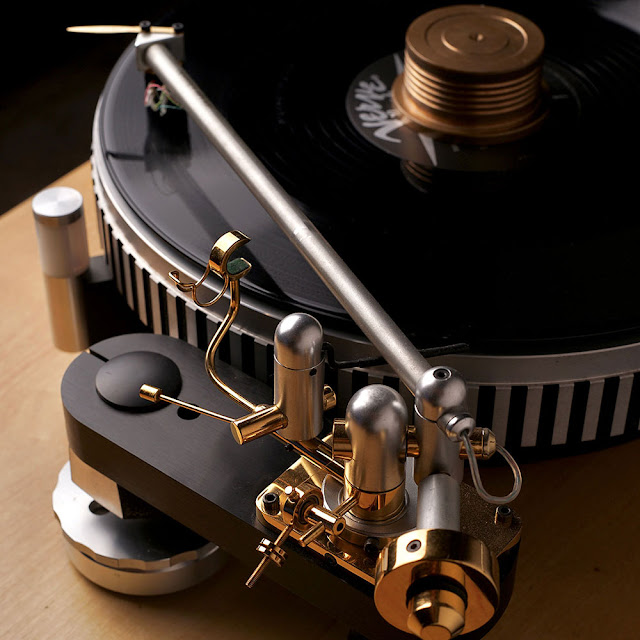Historically, arms mostly used a plain bearing for lateral movement, with needle and cup for vertical. This is typified in arms fitted to portable record players. Better decks had small ball races for the vertical movement. Later, most arms used ball races for both, such as many Japanese arms like FR, and arms by Breuer, SME, Mission, Zeta, Triplanar, and others. Some arms even used watch-like jewel bearings, like the Technics EPA-100.
Decca used a unipivot in the arm they designed to complement their cartridges. Hadcock, Transcriptors, and Keith Monks were others using this type.
SME, of course, used a knife edge for the vertical movement in their original design as did SAEC in Japan. And Origin Live use a dual pivot for vertical movement.
There are also arms like the Well Tempered and Schroeder which use a filament to suspend the arm.
If you register on the brilliant Vinyl Engine site you can browse the huge database of arms in the library and use the excellent calculators.
So what are the advantages and disadvantages of each type? It might seem that one or other design is best, but it is never so straightforward. Here are just a couple of cases.
Let's look at bearing friction. Unipivots and suspended arms generally have the lowest friction in the vertical and horizontal planes, followed by knife edged bearings or dual pivots (which have two unipivot bearings for vertical movement, kind of like two super narrow knife edges which can be constrained). Cup and cone and small ballraces are next. Typically, unipivots require only a few milligrams of force to move them, and most good quality arms need less than 25mg. The Technics EPA-100 with the jewel bearings was claimed to need around 5mg.
So this would appear to be a non-issue if such tiny forces are involved, only 1% or so of tracking force in the worst case. In fact, you could say friction might be a good thing as it adds damping, and damping is often seen in unipivot and other types of arm. Although damping should be adjustable and evenly applied across the record and is probably best applied separately, eg by altering the viscosity in a damping bath. Friction in the bearing is not so easily adjusted. But things are never straightforward.
Typically, when measuring friction, the difference is quite marked
between the force needed to start something moving and the force needed
to keep it going once it has started (static versus dynamic friction). Tonearm bearings usually need
almost the same force to start as to keep moving. But if a bearing is
notchy or sticky in places this difference is increased dramatically. In the vertical plane this leads to variations in downforce, and, horizontaly, to variations in antiskate.
This is where the low friction unipivot/dual pivot has an advantage. It is not susceptible to notching. However, low friction can be one of its disadvantages because any force acting on it might also move it. This I discovered with my RP5, and is typified by the effect of the wiring on many unipivot designs, where the torque exerted by the wiring acts to turn, twist or push the arm in varying directions as it moves through its arc. The closer the wires are to the pivot and the finer they are, the better (as in any arm). Having the wires exit at a distance from the pivot adds leverage to any springiness in the wires and adversely affects tracking. More on testing vertical friction here.
The knife edge is also almost friction free. Its disadvantage, most easily seen in the Goldring arm as fitted to the GL75, is that there is a substantial torque exerted on the bearing when the arm is rotated. In the GL75 the bearing carriers are prone to damage. Knife edge bearings should be made of hard material. They were optimised in chemical balances where they remain static. Like the dual pivot, it needs to be balanced such that there is equal loading on each side of the bearing.
Both the above designs are often criticised because they don't feel as solid or as rigidly mounted as an arm with ball (or cup & cone) bearings for the vertical movment. However, if you think about it, it is only in the matter of rotational freedom that this perception occurs.
The reason for this perception is the typical crude test for bearings, which is to try and twist the arm to detect play. But if there is no play, the bearing must be loaded and therefore subject to friction. This lack of play is both a good and bad thing, because an overloaded bearing dramatically increases friction.
For a given weight of arm, the unipivot load is simply that weight. It acts on what is a very small radius, perhaps 0.05mm, or less, so that the friction has little effect. In a ballrace bearing design the radius is perhaps 3mm and there is the additional preload of the bearings. Some designs such as Technics, have low friction due to the bearing radius being small and the loading low.
While low friction is desirable, smoothness of movement is also important, ie the variation in friction. In ball races, the design of the bearing and the way the balls are held contibutes to this.
However, all the advantages of good bearings are lost if the wiring of the arm interferes with its movement.















